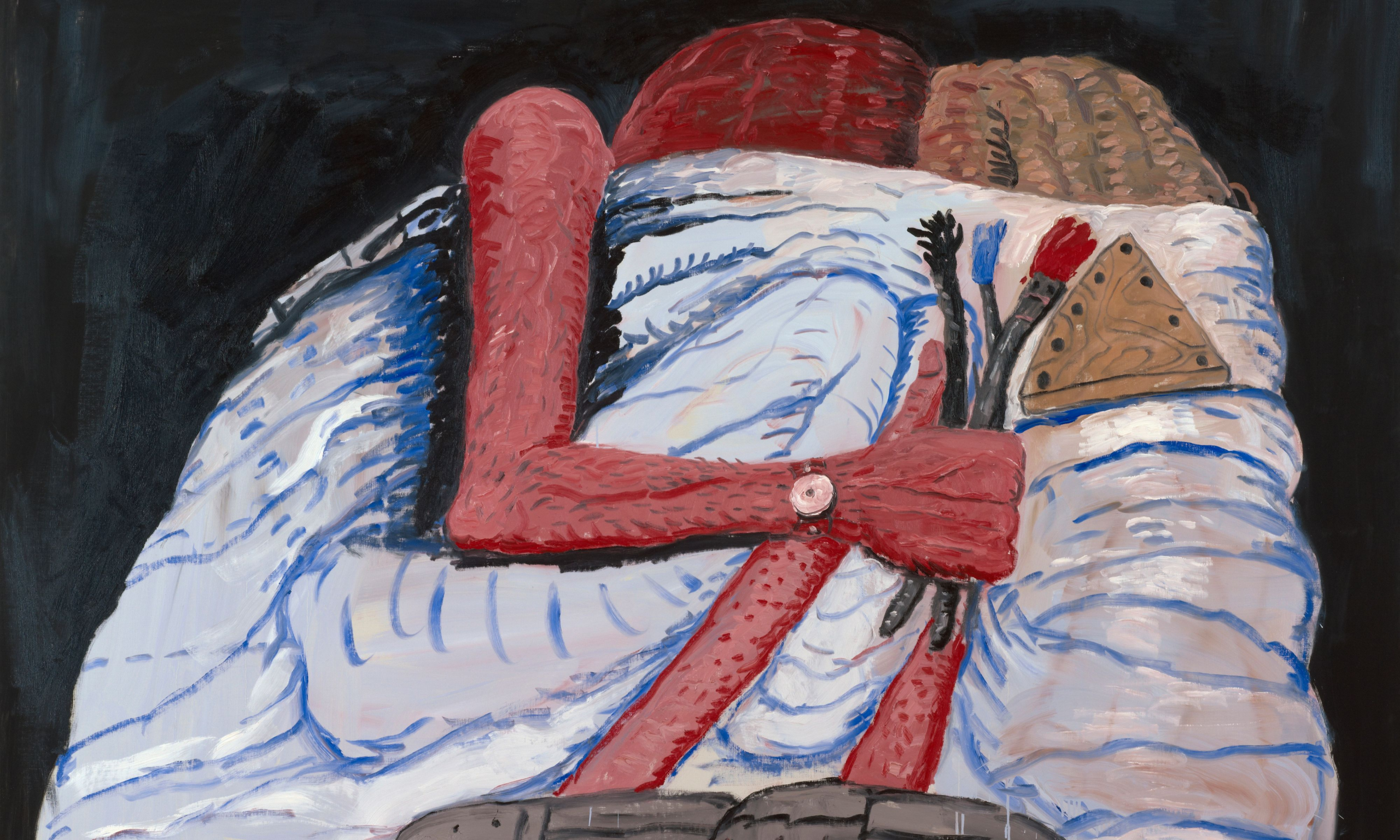Philip Guston's Couple in Bed (1977)
The Art Institute of Chicago © The Estate of Philip Guston, courtesy Hauser & Wirth
A vast survey of Philip Guston’s work has opened at Tate Modern in London (until 24 February 2024) after it was postponed in 2020 in a row over the late Canadian-American artist’s Ku Klux Klan imagery. Philip Guston Now was originally due to open in June 2020 at Washington, DC’s National Gallery of Art, before travelling to the Museum of Fine Arts (MFA) Houston, Tate Modern and finally the Museum of Fine Arts (MFA) Boston in autumn 2021.
After announcing an eight-month Covid-related delay that summer, the four museums angered a large swath of the art establishment by announcing that they were holding off on the opening until 2024. Tate officials said in 2020 that "proceeding on our own would not have been possible for financial and logistical reasons and would have been disrespectful to our partner museums".
Though it was not referred to explicitly in the statement issued by the museums on 21 September 2020, it appeared that Guston’s paintings and drawings featuring hooded figures evoking the Ku Klux Klan were the issue. The museums said that they were postponing the exhibition “until a time we think that the powerful message of social and racial justice that is at the centre of Philip Guston’s work can be more clearly interpreted”. The Boston leg subsequently opened earlier this year, having “undergone a dramatic redesign, relying now on thematic as well as chronological groupings”.
The Tate Modern exhibition addresses the issue of the Ku Klux Klan at the start of the show with panels outlining that “Guston depicted racial injustice in his art from early on… Guston focuses on the perpetrators of racist violence [in the work Drawing for Conspirators made when he was 17], placing a Klansman in the foreground.” In the later section Hoods, “Guston raises questions about who is behind the hood and how their violent ideologies are masked in society”, says a wall text.
Philip Guston's Flatlands (1970) San Francisco Museum of Modern Art (San Francisco, USA) © The Estate of Philip Guston
Asked about the exhibition delay, Tate director Maria Balshaw tells The Art Newspaper that the extra time allowed the show's curators to travel and conduct further research, pointing to a film of a mural the artist made in Mexico (The Struggle Against Terrorism, 1934-35) which was captured especially for the Tate exhibition. The mural illustrates resistance to persecution and violence from the Middle Ages through to the rise of the Ku Klux Klan in the US.
The exhibition co-curator Michael Raymond says: “We’ve changed certain aspects of the show… about 75% is the same. We’ve brought in some extra works. We wanted to lay the show out more chronologically to help visitors get the sense of the Hoods pictures and where he’s come from in the 1920s and 1930s. We always wanted to draw upon his transnational connections, covering his trips to Rome and to Mexico.”
Philip Guston's The Line (1978)
© The Estate of Philip Guston, courtesy Hauser & Wirth
In a review in The Times, critic Laura Freeman writes: “This is not the show we were expecting to see. This was supposed to be the controversial Philip Guston show, the almost-cancelled Philip Guston show, the culture-wars cause-célèbre Philip Guston show. I was expecting trigger warnings, Black Lives Matter hashtags, safe spaces and recovery rooms for anyone affected by the issues raised. Tate Modern has done something much more radical: made it an exhibition about painting.”
A number of works are on show in the UK for the first time including Female Nude with Easel (1935) and Nude Philosopher in Space-Time(1935), both of which are on loan from the Estate of Philip Guston.

